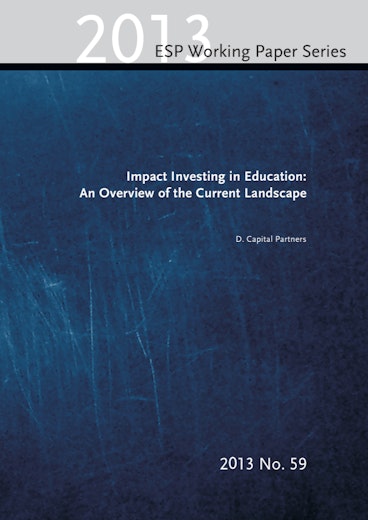Despite the fact that access to education has dramatically increased over the past decade, 57 million children do not currently have access to education, and many of those who do receive limited, low-quality services.
Recent estimates have shown that the stagnation of aid and inflation has meant that the funding gap needed to provide basic education for all children and adults has increased from $16 billion to $26 billion. In this context, impacting investing, which uses the tools of commercial capital deployment for social good, has emerged as a potential tool to support education access, equity, and quality.
This study maps the emerging landscape of education impact investing, with a view to identify potential areas for intervention by investors. It describes the characteristics of impact investment, including sources of capital, investor profiles and preferences, and areas of investment. Its focus is on investments that broaden access to quality education, especially for the most vulnerable populations.
This study, conducted by D. Capital Partners, is part of the Open Society Education Support Program’s efforts to identify innovative financing mechanisms and approaches that can increase the availability and allocation of resources for education systems.
Download
-
Impact Investing in Education: An Overview of the Current Landscape (7.6 Mb pdf file)
Download the complete 46-page paper.
